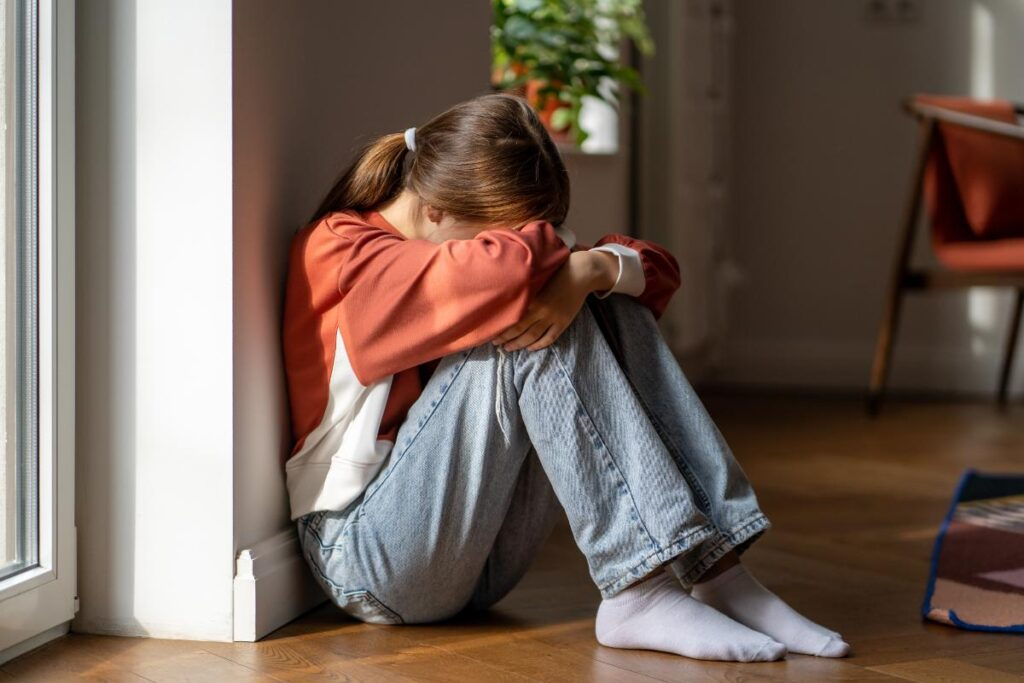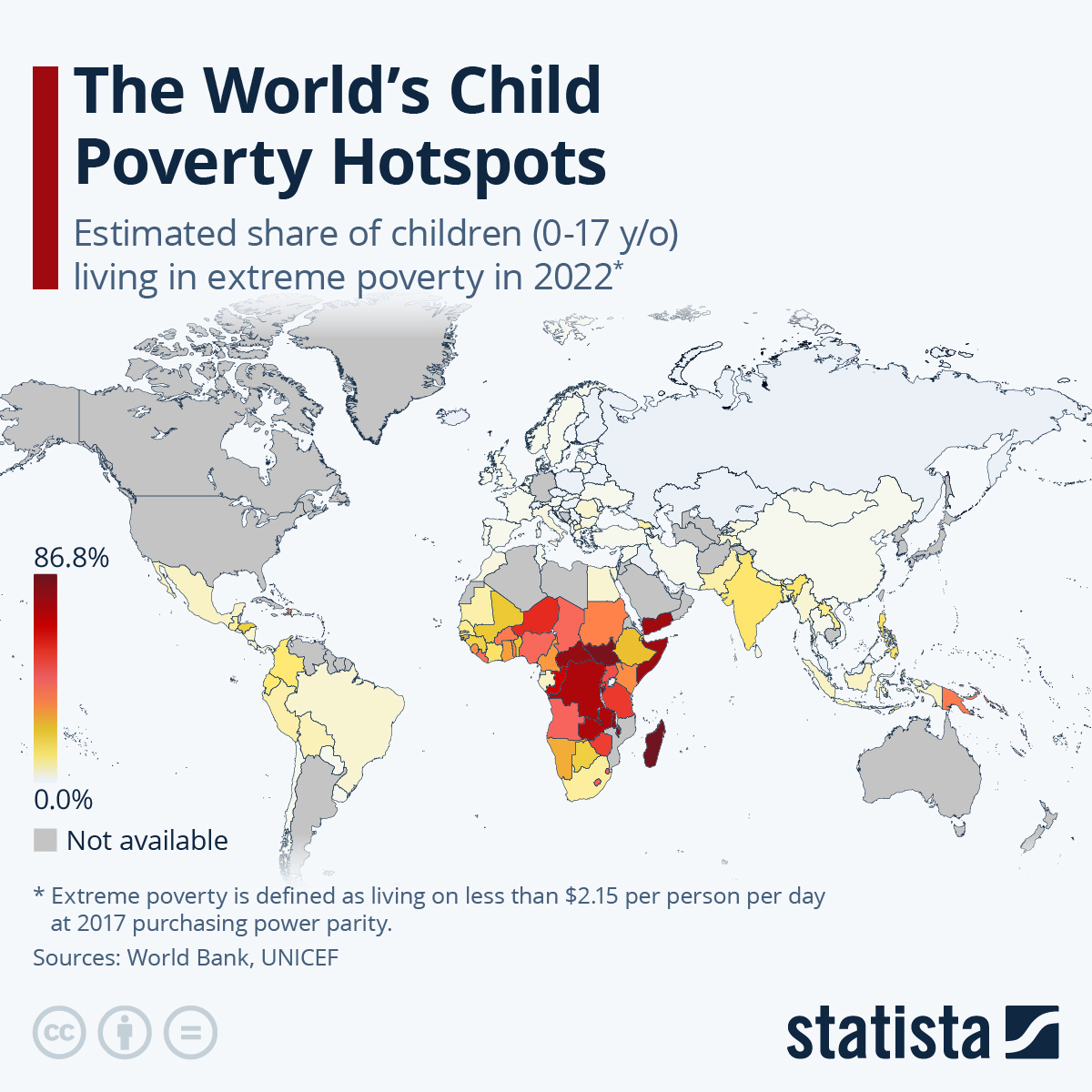The Impact of Poverty on Children’s Mental Health: Breaking the Cycle of Disadvantage
Poverty is not just the absence of money; it is the deprivation of basic human needs—food, shelter, security, education, and healthcare. When children are born or raised in poverty, they are exposed to conditions that significantly influence their mental, emotional, and psychological well-being. Mental health, a crucial foundation for cognitive development and lifelong resilience, is highly sensitive to the socioeconomic environment.
Globally, over 1 in 6 children lives in extreme poverty (less than $2.15/day), and millions more suffer from relative poverty that limits access to mental health support, education, and social care. This article explores the multifaceted impact of poverty on children’s mental health, highlighting the mechanisms, manifestations, and long-term consequences, as well as strategies to mitigate this global crisis.
Understanding Childhood Poverty
Childhood poverty can be categorized into several dimensions:
-
Absolute Poverty: Lack of access to basic survival needs such as food, clean water, and shelter.
-
Relative Poverty: Living in households with significantly lower income than the societal average.
-
Multidimensional Poverty: Incorporating health, education, and living standards beyond income alone.
Children affected by poverty are more likely to:
-
Live in overcrowded or unsafe housing
-
Attend underfunded schools
-
Experience food insecurity
-
Suffer from chronic stress and trauma
-
Be exposed to violence or neglect
These factors contribute significantly to mental health disorders during developmental years.
How Poverty Impacts Mental Health
1. Chronic Stress and the Developing Brain
Living in poverty causes toxic stress, a condition of prolonged activation of the stress response system. Unlike moderate stress that may be manageable, toxic stress without supportive caregivers damages the brain, especially in early childhood.
Key effects include:
-
Reduced size and functioning of the prefrontal cortex (decision-making and impulse control)
-
Increased reactivity in the amygdala (emotional regulation, fear)
-
Lower volume of the hippocampus (memory and learning)
This neurobiological alteration leads to heightened anxiety, depression, poor emotion regulation, and learning disabilities.
2. Increased Risk of Psychiatric Disorders
Numerous studies show a strong link between childhood poverty and mental health conditions, such as:
-
Depression
-
Anxiety disorders
-
Post-traumatic stress disorder (PTSD)
-
Attention-deficit/hyperactivity disorder (ADHD)
-
Conduct disorders and aggression
Children growing up in low-income families are two to three times more likely to develop mental health problems than their more affluent peers.
3. Exposure to Violence and Neglect
Poverty increases exposure to community violence, domestic abuse, and parental neglect. These traumatic experiences are known adverse childhood experiences (ACEs) and directly predict poorer mental health outcomes.
According to the CDC, children with four or more ACEs are:
-
7× more likely to develop depression
-
12× more likely to attempt suicide
-
Significantly more likely to engage in substance abuse
4. Parental Mental Health and Intergenerational Impact
Parental stress due to poverty—especially maternal depression—is one of the strongest predictors of poor mental health in children. Parents under financial strain may be less responsive, more irritable, or emotionally unavailable.
This lack of secure attachment can create:
-
Insecure emotional bonds
-
Delayed emotional development
-
A higher risk of developing internalizing or externalizing behaviors
Thus, poverty doesn't just affect one generation; it perpetuates a cycle of psychological harm.
5. Educational Barriers and Cognitive Deficits
Poverty also correlates with reduced access to quality education and cognitive stimulation, which are crucial for developing healthy self-esteem and social skills.
Poor children often:
-
Attend schools with underqualified teachers
-
Lack access to mental health counselors
-
Suffer from learning difficulties or delayed milestones
-
Are misdiagnosed or undiagnosed due to lack of screening
Global Statistics: A Widening Mental Health Gap
Here’s a snapshot of global child poverty and mental health:
-
UNICEF (2023): Over 333 million children globally live in extreme poverty.
-
World Bank: Children make up more than half of the extremely poor population.
-
WHO: One in seven adolescents (10–19) suffers from a mental health condition; depression is a leading cause of illness.
-
Save the Children (2022): Children in the lowest income brackets are 3× more likely to suffer from severe psychological distress.
Case Studies: The Real Faces of Poverty
Case 1: Rohingya Refugee Children in Bangladesh
In refugee camps in Cox's Bazar, thousands of displaced children live in poverty and trauma. With limited access to education or play, they report symptoms of PTSD, anxiety, and despair. Humanitarian efforts report a mental health crisis among youth exacerbated by poverty and displacement.
Case 2: Urban Slums in Brazil
In favelas of Rio de Janeiro, children are surrounded by violence, hunger, and overcrowding. Exposure to gang violence, family unemployment, and substance abuse leads to a high prevalence of conduct disorders and suicidal ideation in adolescents.
The Cycle of Poverty and Mental Illness
Poverty leads to poor mental health. Poor mental health impairs educational and occupational success. This in turn perpetuates poverty—a vicious cycle.
Children with untreated mental health issues:
-
Drop out of school
-
Struggle with employment later in life
-
Are more likely to experience homelessness or incarceration
Unless broken, this cycle becomes intergenerational.
Solutions and Interventions
1. Early Childhood Support Programs
Evidence-based programs like Head Start (USA) and Sure Start (UK) provide:
-
Nutritional support
-
Cognitive stimulation
-
Parenting education
-
Access to social workers and psychologists
2. School-Based Mental Health Services
Schools can be the first line of defense by:
-
Providing screening and counseling
-
Training teachers in trauma-informed care
-
Implementing emotional literacy and mindfulness programs
3. Cash Transfer and Anti-Poverty Policies
Conditional and unconditional cash transfers have proven mental health benefits. For example:
-
Brazil’s Bolsa Família program reduced depression symptoms in children by reducing food insecurity.
-
UNICEF’s Child Grant in Nepal improved child well-being and reduced behavioral problems.
4. Community-Based Mental Health Services
Programs must reach marginalized communities by:
-
Training local health workers in mental health
-
Using mobile clinics or digital tools
-
Offering culturally sensitive interventions
Promising International Models
-
UK’s CAMHS (Child and Adolescent Mental Health Services) offers free therapy and psychiatric help through the NHS.
-
UNICEF’s “Child Friendly Cities” initiative helps local governments make urban environments more supportive of children’s development.
-
WHO’s mhGAP Intervention Guide supports non-specialists in delivering mental health care in low-resource settings.
The Role of Parents and Caregivers
Even in poverty, positive parenting can buffer children from psychological harm. Key actions include:
-
Providing emotional warmth and stability
-
Listening and engaging in play
-
Maintaining routines and discipline with love
-
Seeking help early when signs of distress appear
Future Directions
To reduce the burden of childhood mental health problems rooted in poverty, we must:
-
Recognize mental health as a development priority in humanitarian and poverty programs
-
Integrate psychosocial support into maternal and child health services
-
Measure mental health outcomes in poverty reduction strategies
-
Fund universal mental health coverage for vulnerable populations
Child poverty is not just a moral issue—it is a public health emergency. The mental health consequences are far-reaching and deeply rooted. Children born into poverty are not destined for psychological illness, but without intervention, the risk is high.
We must act at every level—household, school, community, and government—to build environments that support healthy mental development. Investing in children's mental health is not only compassionate, but also essential for breaking the chains of intergenerational poverty and building a just, thriving society.
References and International Data Sources
-
UNICEF (2023). Global Report on Child Poverty.
-
World Bank (2022). Ending Extreme Poverty: A Focus on Children.
-
WHO (2023). Adolescent Mental Health Fact Sheet.
-
Centers for Disease Control and Prevention (CDC). Adverse Childhood Experiences (ACE) Study.
-
Save the Children (2022). Mental Health and Poverty in Children: A Global Overview.
-
National Scientific Council on the Developing Child (Harvard University). Toxic Stress: The Early Childhood Roots of Lifelong Mental Health.
-
Institute for Fiscal Studies, UK. Poverty and Mental Health in Children.
-
American Psychological Association (APA). The Psychological Effects of Poverty on Children.
-
UNDP Human Development Report (2023).
-
World Health Organization (WHO). Mental Health Gap Action Programme (mhGAP).




.jpeg)
Comments
Post a Comment